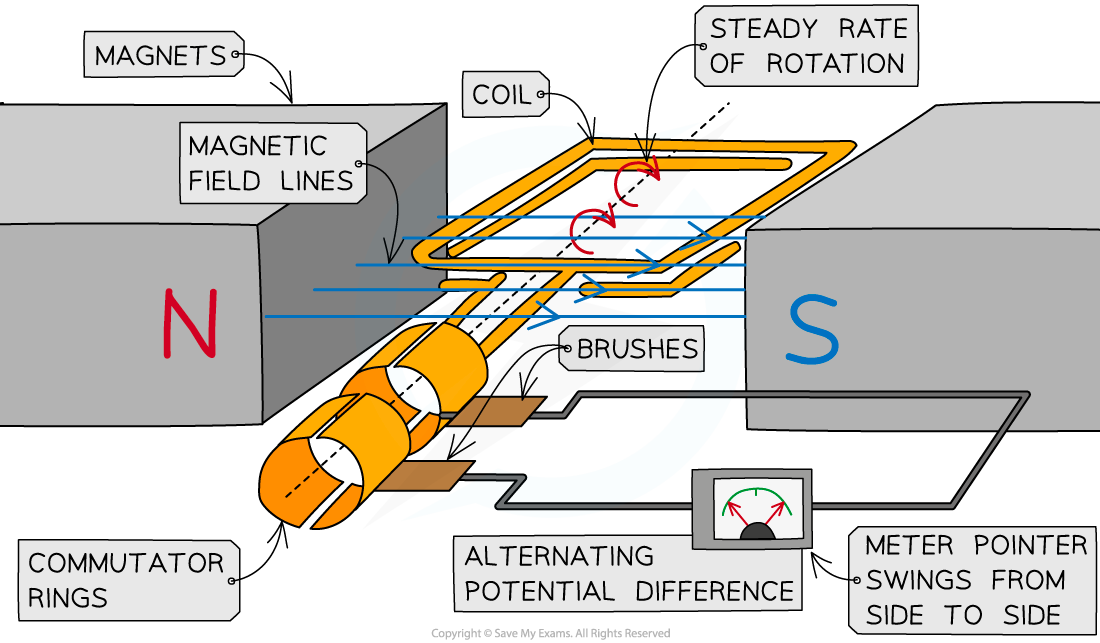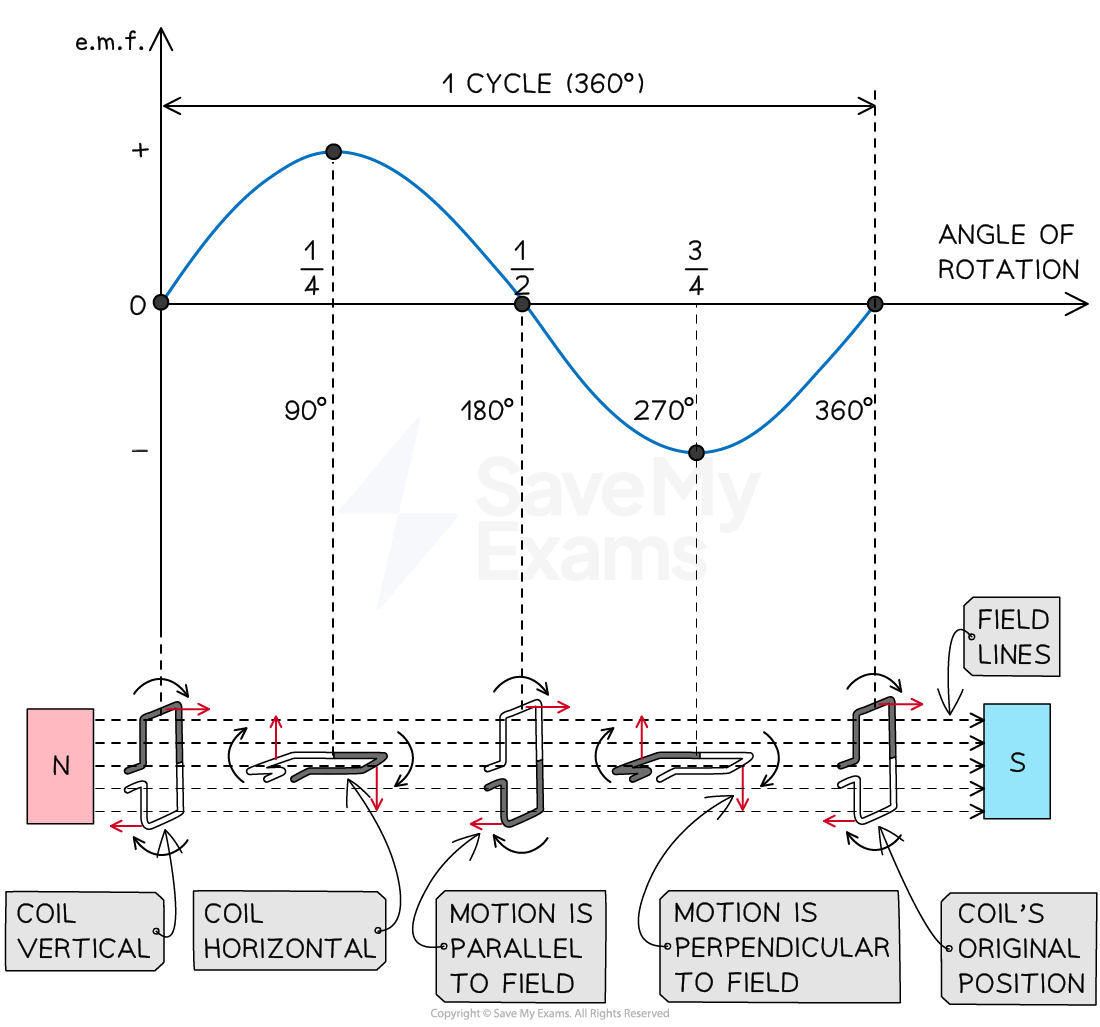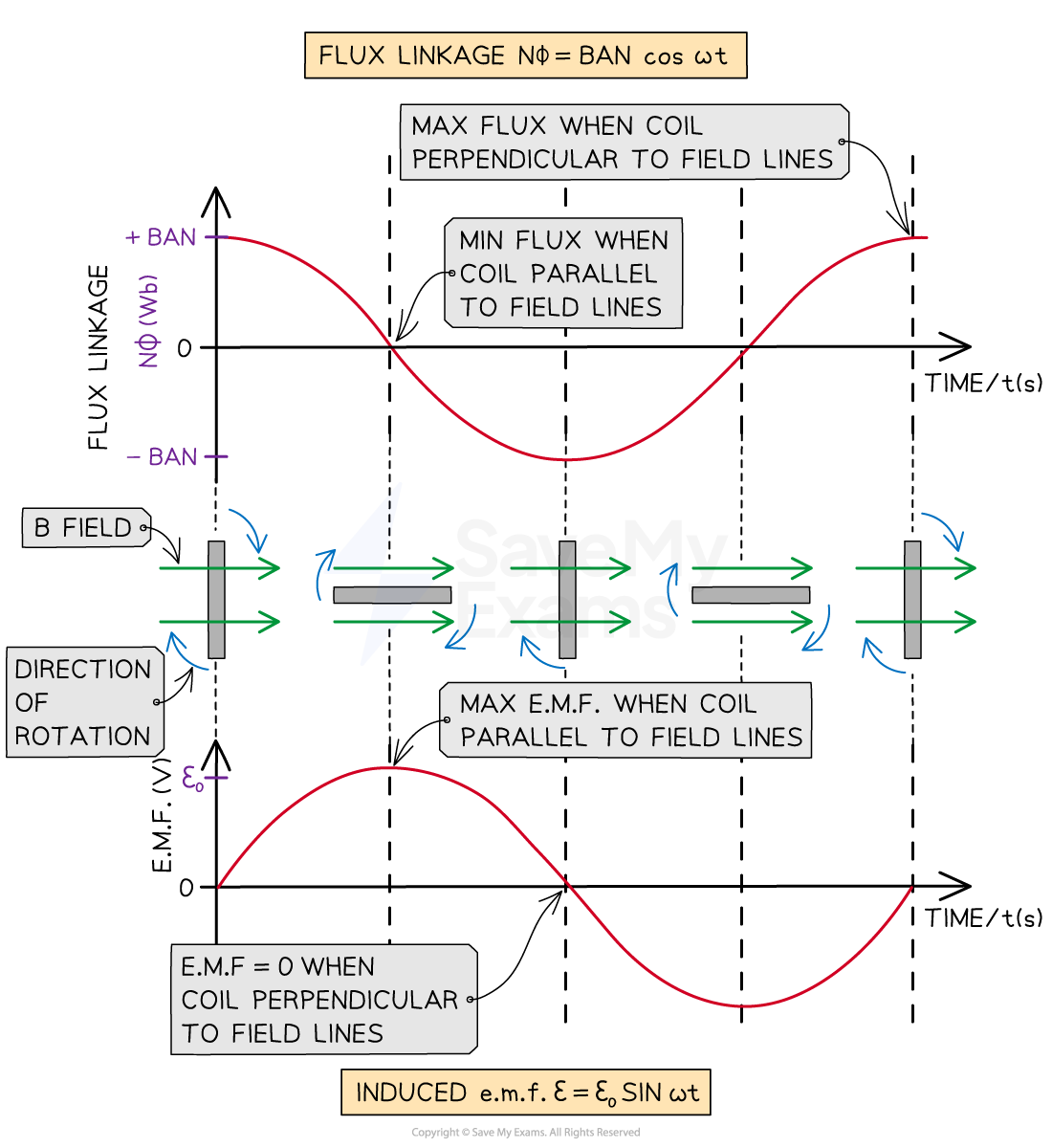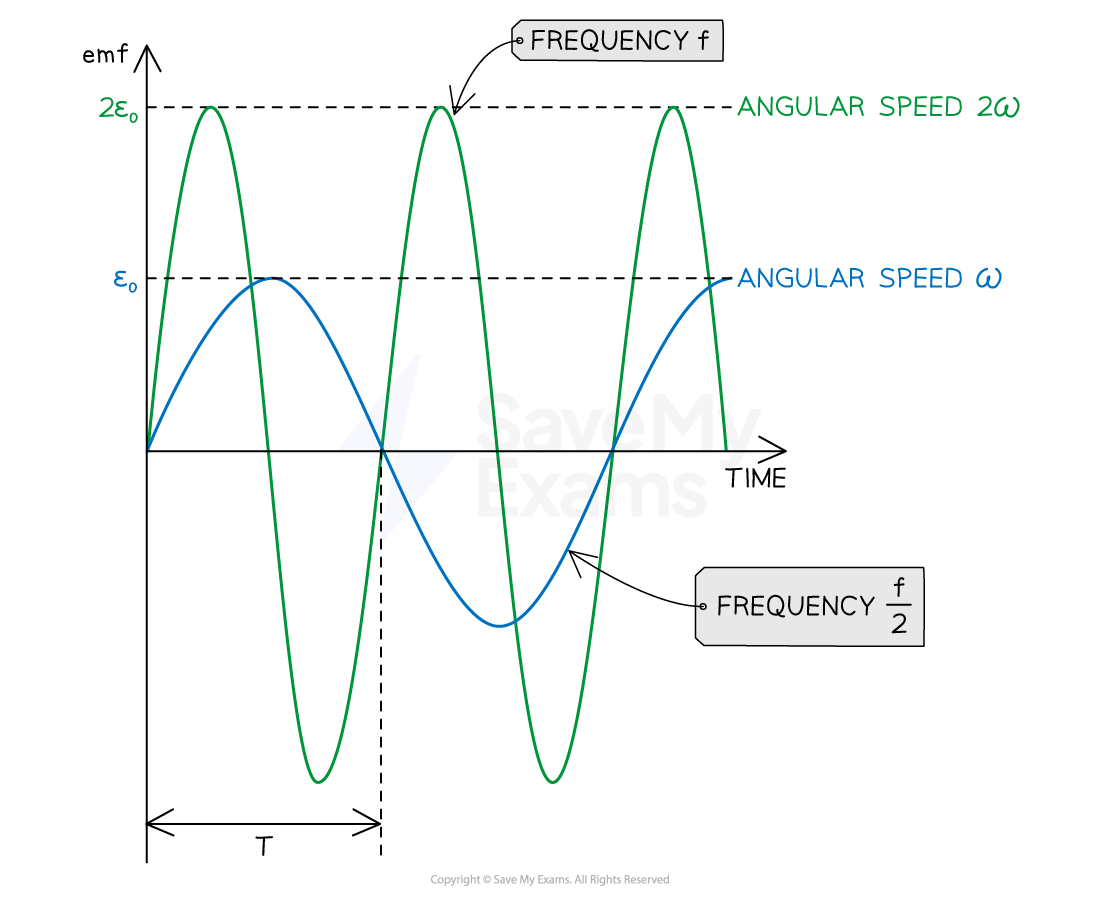AC Generators (DP IB Physics) : Revision Note
The AC generator
If a coil of wire is rotated inside a magnetic field by an external force, an e.m.f. will be generated in the wire which causes current to flow within the coil
A simple A.C. generator converts mechanical energy into electrical energy in the form of alternating current

An alternator is a rotating coil in a magnetic field connected to commutator rings
A rectangular coil is forced to spin in a uniform magnetic field
The coil is connected to a centre-reading meter by metal brushes that press on two metal slip rings (or commutator rings)
The slip rings and brushes provide a continuous connection between the coil and the meter
When the coil turns in one direction:
The pointer defects first one way, then the opposite way, and then back again
This is because the coil cuts through the magnetic field lines and a potential difference, and therefore current, is induced in the coil
The pointer deflects in both directions because the current in the circuit repeatedly changes direction as the coil spins
This is because the induced potential difference in the coil repeatedly changes its direction
This continues as long as the coil keeps turning in the same direction
The induced potential difference and the current alternate because they repeatedly change direction

As the coil rotates in the magnetic field, the changing magnetic flux causes the induction of e.m.f. in the opposite sides of the coil
Emf Induction in a Rotating Coil
When a coil rotates in a uniform magnetic field, the flux through the coil will vary as it rotates
Since e.m.f is the rate of change of flux linkage, this means the e.m.f will also change as it rotates
The maximum e.m.f is when the coil cuts through the most field lines
The e.m.f induced is an alternating voltage
Flux linkage is given by
Angular speed ω is defined as the rate of change of angular displacement, so
Therefore, for a rotating coil, the angle θ depends on the angular speed of the coil ω:
Hence, flux linkage can also be written as:
Where:
= flux linkage (Wb turns)
B = magnetic flux density (T)
A = cross-sectional area of the coil (m2)
N = number of turns of coil
ω = angular speed of the coil (rad s-1)
t = time (s)

Flux linkage and induced e.m.f. in a rotating coil
The graph shows that
The induced e.m.f varies sinusoidally and it is 90° out of phase with the flux linkage
Mathematically, the induced e.m.f. can also be written as:
Where:
ε = e.m.f induced in the coil (V)
ε0 = maximum e.m.f induced in the coil (V)
The size of the induced e.m.f. in a rotating coil can be increased by increasing the frequency of rotation of the coil
Increasing the coil's frequency of rotation increases:
The frequency of the alternating voltage
The amplitude of the alternating voltage

Doubling the angular speed of the rotating coil in a magnetic field doubles the size of the induced e.m.f. (double the amplitude) and the frequency of the rotation (half the time period)
Worked Example
An alternating current generator induces an e.m.f. of at a frequency .
The rotational speed of the coil in the generator is doubled.
Which row correctly identifies the new output e.m.f. and the new frequency?
| e.m.f. | frequency |
A. | ||
B. | ||
C. | ||
D. |
Answer: A
Angular speed, time period and frequency are related by
Therefore,
, so if angular speed doubles, the frequency will also double
If the coil rotates at twice the frequency, the rate of change of magnetic flux linkage will double
Hence, induced e.m.f. and angular speed are directly proportional
This means the induced e.m.f. will double if angular speed doubles
new e.m.f. = , new frequency =
Examiner Tips and Tricks
Remember not to get mixed up with when the e.m.f or the flux linkage is at its maximum:
When the plane of the coil is perpendicular to the field lines
The flux linkage is at its maximum
The e.m.f = zero
When the plane of the coil is parallel to the field lines
The flux linkage is zero
The e.m.f is at its maximum
Since ω is in units of rads s-1, make sure your calculator is in radians mode before entering any values into sin(ωt) or cos(ωt).
The equation of e.m.f with sin(ωt) is not given in your data booklet - you must be able to recognise this in exam questions!

You've read 0 of your 5 free revision notes this week
Sign up now. It’s free!
Did this page help you?
